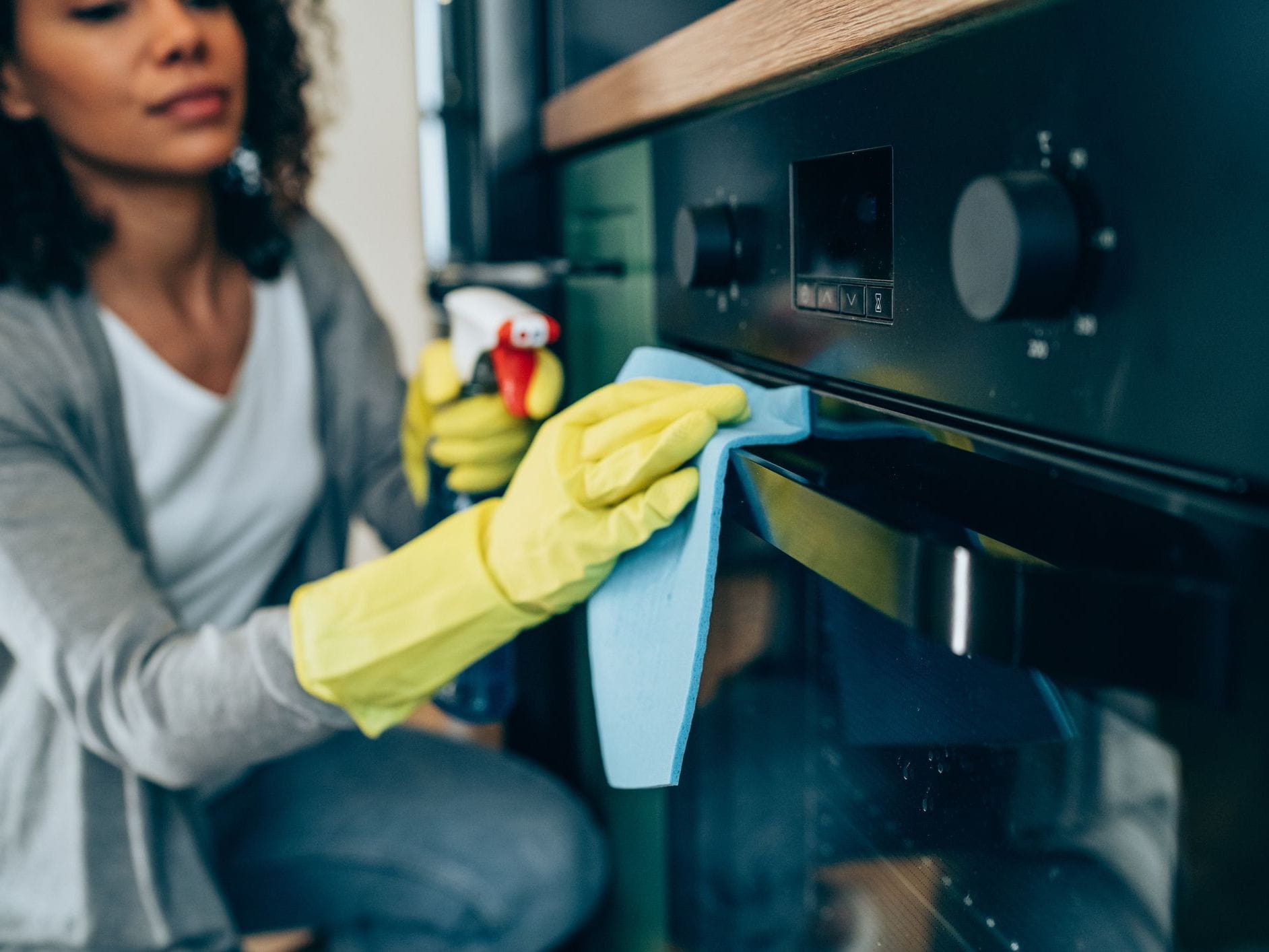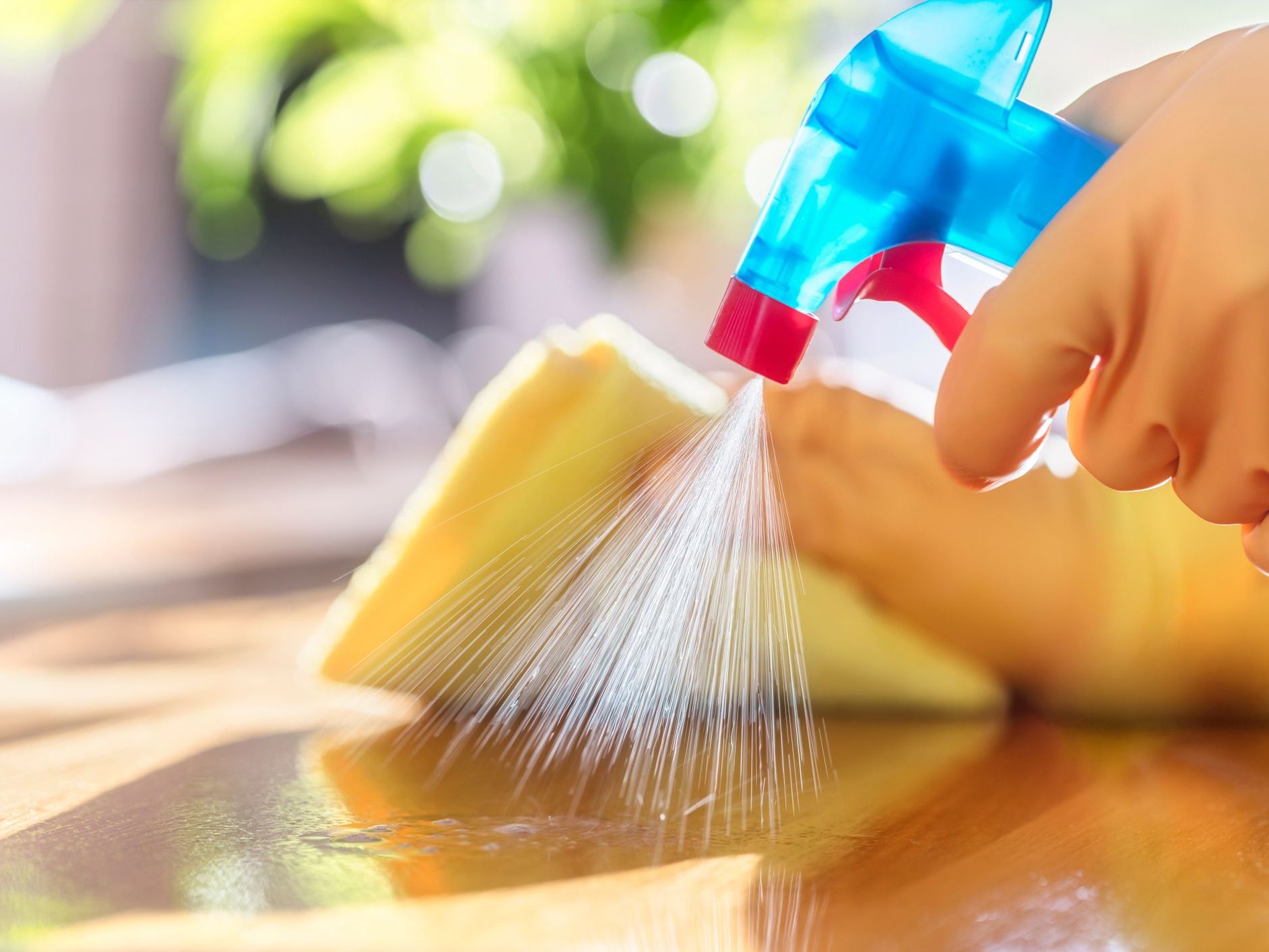Cleaning Sprays: How Harmful Are They?

The Bottom Line
Multi-surface cleaners contain a variety of ingredients, some of which cause irritation. If swallowed, they can cause mouth and throat irritation, stomachache, vomiting and diarrhea. Respiratory symptoms include sore throat, runny nose, cough, shortness of breath, and wheezing. Redness, pain, and burning can occur if splashed on skin or in eyes. Drink water and/or rinse eyes and skin following exposure.

Common ingredients in multi-surface cleaning sprays and liquids
Multi-surface cleaners are designed to clean hard, non-porous surfaces such as counter tops and sinks. These sprays and liquids contain a variety of ingredients including water, ionic and nonionic surfactants (such as alcohol ethoxylate), phosphates, solvents (such as rubbing alcohol, 2-butoxyethanol, acetone, and hydrocarbons), anti-corrosion substances (such as thiourea), skin-protective substances, fragrances, and dyes. Some cleaners also contain chlorine bleach or ammonia. Disinfectant cleaners may contain quaternary ammonium compounds, phenols, alcohol, or peroxide.Cleaning sprays to be wary of
Cleaners can cause irritation of the nose, throat, and lungs if inhaled, as well as to the skin and eyes. Ingredients that are especially irritating include alcohols and other volatile organic solvents, chlorine bleach, ammonia, and many disinfectant agents. Cleaners specifically designed to remove mineral deposits or rust and those that dissolve grease may contain corrosives (acids or alkali) which can cause burns.Are cleaning spray fumes dangerous to breathe?
It depends on the cleaner. Some are relatively dilute and unlikely to result in toxicity if you breathe them in during normal use. Others are stronger so they can irritate your respiratory system, especially if used in a closed, poorly ventilated area or if a large amount is used.Signs and symptoms of a negative reaction
Signs and symptoms of a negative reaction include tearing, redness, and burning sensation in the eyes, an irritated or runny nose, sore throat, cough, and shortness of breath. People with pre-existing respiratory conditions such as emphysema or asthma may be more prone to toxicity. For example, someone with asthma may experience an asthma attack after inhaling these products. Multi-surface cleaners can be irritating to the skin resulting in redness, pain, and in some cases burns. If contact dermatitis develops, symptoms can include redness, dryness, itching, rash and hives.I swallowed a multi-surface cleaning liquid. What should I do?
Wipe out your mouth with a washcloth and rinse with water. Drink a glass of water. Check the product label to see if there are instructions related to ingesting it. Depending on the product, you may experience mouth and throat irritation, stomachache, vomiting and diarrhea.
If symptoms are serious or persist you should seek medical advice. Help from experts is available through the webPOISONCONTROL online tool and by phone at 1-800-222-1222. Poison Control’s expert guidance is always free, confidential, and available 24 hours a day.
Treatment for eyes and skin
If you get the cleaner in your eye, rinse your eye with water for 15 minutes. If you get the cleaner on your skin, wash well with soap and water. If you experience persistent eye or skin irritation, you should seek advice from Poison Control or a health care professional. Help from experts is available through the webPOISONCONTROL online tool and by phone at 1-800-222-1222.Clinical Toxicologist
Poisoned?
Call 1-800-222-1222 or
Prevention Tips
- Store multi-purpose cleaners up, away, and out of sight of children.
- Read product labels and follow instructions for use.
- Check labels for warnings.
- Wear gloves to minimize risk of skin exposure.
- Use products in a well-ventilated area.
- Be sure the nozzle is pointed at the surface you are cleaning and away from your face.
- When buying cleaners, look for less toxic options.
- Do not mix cleaning products.
This Really Happened
An adult woman was cleaning the kitchen countertop with a multi-purpose spray cleaner. She stopped briefly to answer a phone call. When she started using the product again, she picked it up in such a way that the spray nozzle was facing her. She sprayed some cleaner on her face and into her eyes. She immediately experienced tearing, burning, and stinging in her eyes, as well as skin irritation. She rinsed her eyes and skin with water for about 3 minutes and then called Poison Control for advice. Poison Control told her to wash her face with soap and water and to rinse her eyes with water for 15 minutes.
On follow-up, she told Poison Control that both her skin and eyes were still red, but neither felt irritated. She was told that moisturizing lotion or cream on her face and saline eye drops would help her feel better but that she should be fine without any further specific treatment. If she had any other concerns, she could call back to Poison Control.
For More Information
Identifying Greener Cleaning Products. EPA.References
Poisoned?
Call 1-800-222-1222 or
Prevention Tips
- Store multi-purpose cleaners up, away, and out of sight of children.
- Read product labels and follow instructions for use.
- Check labels for warnings.
- Wear gloves to minimize risk of skin exposure.
- Use products in a well-ventilated area.
- Be sure the nozzle is pointed at the surface you are cleaning and away from your face.
- When buying cleaners, look for less toxic options.
- Do not mix cleaning products.
This Really Happened
An adult woman was cleaning the kitchen countertop with a multi-purpose spray cleaner. She stopped briefly to answer a phone call. When she started using the product again, she picked it up in such a way that the spray nozzle was facing her. She sprayed some cleaner on her face and into her eyes. She immediately experienced tearing, burning, and stinging in her eyes, as well as skin irritation. She rinsed her eyes and skin with water for about 3 minutes and then called Poison Control for advice. Poison Control told her to wash her face with soap and water and to rinse her eyes with water for 15 minutes.
On follow-up, she told Poison Control that both her skin and eyes were still red, but neither felt irritated. She was told that moisturizing lotion or cream on her face and saline eye drops would help her feel better but that she should be fine without any further specific treatment. If she had any other concerns, she could call back to Poison Control.
